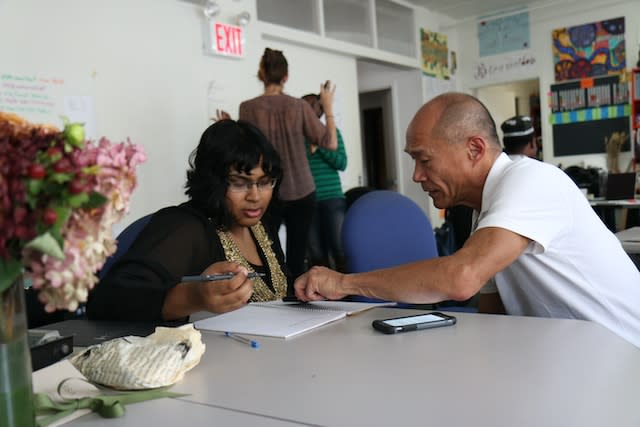How to Showcase Your Soft Skills in a Cover Letter



Crafting an impactful cover letter goes beyond listing qualifications and experiences; it's an opportunity to showcase your personality and unique attributes. Soft skills, often overlooked but highly valued by employers, play a pivotal role in setting you apart from other candidates. In this guide, we'll explore effective strategies on how to effectively showcase your soft skills in a cover letter, ensuring you leave a lasting impression on prospective employers.
Understanding Soft Skills:
Identify Relevant Soft Skills: Begin by identifying the soft skills most relevant to the position you're applying for. Common examples include communication, teamwork, adaptability, problem-solving, and leadership. Refer to the job description to pinpoint the skills the employer is seeking.
Highlight Key Soft Skills: Choose two or three soft skills that align with the job requirements and stand out as your strengths. Focus on quality over quantity to maintain brevity and impact.
Structuring Your Cover Letter:
Incorporate in the Opening Paragraph: Introduce your soft skills in the opening paragraph to immediately capture the reader's attention. For example, you might mention your exceptional communication skills or ability to collaborate seamlessly with diverse teams.
Weave Soft Skills into Accomplishments: Instead of listing soft skills separately, integrate them into your achievements. Describe how your effective communication led to a successful project or how your adaptability helped navigate challenging situations.
Provide Concrete Examples: Support your claims with specific examples. Describe a situation where your problem-solving skills were crucial or how your leadership abilities positively impacted a team project. Tangible examples add credibility to your soft skill assertions.
Tailoring to the Company Culture:
Research the Company Culture: Gain insights into the company's values and culture. Identify soft skills that align with these values and emphasize them in your cover letter. This shows that you understand the company's ethos and can contribute positively to its environment.
Connect Soft Skills to Company Goals: Illustrate how your soft skills can contribute to achieving the company's goals. If adaptability is a key soft skill, explain how it aligns with the organization's innovative approach or dynamic work environment.
Other Cover Letter Tips:
Soft skills are the personal attributes and abilities that enable you to interact effectively and harmoniously with other people. They include communication, teamwork, problem-solving, creativity, adaptability, and emotional intelligence. These skills are highly valued by employers, as they demonstrate your potential to fit in the company culture and work well with others.
To showcase your soft skills in a cover letter, you need to:
Research the company and the job description to identify the most relevant soft skills for the position.
Provide specific examples of how you have used your soft skills in previous roles or projects, and how they contributed to your success and the organization’s goals.
Use action verbs and quantifiable results to highlight your achievements and impact.
Use positive and confident language to express your enthusiasm and interest in the role and the company.
Proofread and edit your cover letter for clarity, accuracy, and professionalism.
Here are some examples of how to showcase different soft skills in a cover letter:
Communication: “As a customer service representative, I communicated effectively with a diverse range of clients, resolving their issues and providing them with information and guidance. I received positive feedback from both customers and managers for my clear, courteous, and empathetic communication style.”
Teamwork: “As a project manager, I led a team of six developers to deliver a web application for a major client. I coordinated the tasks, deadlines, and resources, and ensured that everyone was on the same page and working collaboratively. We completed the project on time, on budget, and with high quality standards.”
Problem-solving: “As a marketing analyst, I identified and solved a problem with the data collection process that was affecting the accuracy of our reports. I proposed and implemented a new method that improved the data quality and reliability, and increased the efficiency and productivity of the team.”
Creativity: “As a graphic designer, I created original and innovative designs for various print and digital media. I used my creativity and technical skills to produce visually appealing and engaging content that captured the attention and interest of the target audience.”
Adaptability: “As a sales associate, I adapted quickly to changing customer needs and preferences, as well as to new products and promotions. I learned new skills and knowledge, and applied them to provide excellent customer service and increase sales.”
Emotional intelligence: “As a teacher, I demonstrated emotional intelligence by understanding and managing my own emotions, as well as recognizing and responding to the emotions of my students. I created a positive and supportive learning environment, where I motivated and inspired my students to achieve their academic and personal goals.”
Closing Strong:
Reiterate Soft Skills in Conclusion: Summarize your key soft skills in the closing paragraph. Emphasize your eagerness to bring these qualities to the role and contribute to the team's success.
Express Enthusiasm: Conclude with a statement expressing your enthusiasm for the position and your belief that your soft skills make you an ideal fit for the company.
Conclusion:
Mastering the art of showcasing soft skills in your cover letter is a strategic way to set yourself apart in the competitive job market. By aligning your soft skills with the job requirements, providing specific examples, and tailoring your approach to the company's culture, you can create a compelling narrative that resonates with prospective employers. Remember, your soft skills are a valuable asset – make sure they shine through in every paragraph of your cover letter.

